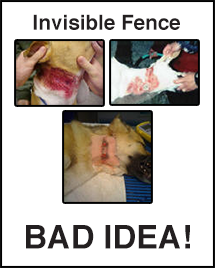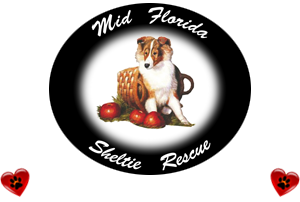Mid Florida Sheltie Rescue
We Find, Love, Rescue and Foster Shelties.
Applications
Before filling out any of our applications Please make sure you have 15-20 minutes to answers all of the questions carefully and accurately.
We do ask a lot of questions but rest assured they are necessary. Imagine you have to relinquish your beloved friend and wonder if he/she will be well taken care of. Well, that is why we ask the all those questions on our adoption application. This makes it easier to place that sheltie into the best furever home.
Now, imagine you are the person adopting that sheltie. Wouldn’t you want to know all you can about where he/she came from? What they have been through? That’s why we ask so many questions on our surrender application. Same goes for the foster application. We want to know all about the people we entrust to care for these beautiful souls until their furever home can be found.
You might think——do they really need all of that information?
After all, aren’t these homeless shelties? Wouldn’t any owner be better than being a dog, lamenting in rescue? Than being homeless??
Nope – as a matter of fact, these questions and in-depth applications have a purpose. The individuals who run our rescue have seen quite a bit of dog stuff in their day. They have seen the circumstances that brought these shelties into rescue in the first place.
There are a few “real” cases where a dog needs the help of a rescue because the owner has died or fallen ill, but the majority of shelties in rescue are there because they had owners who did things wrong, or did not do the things they needed to.
So, why does the application ask the names and ages of those in the household?
Because they need to know if there are kids in the house that might be at risk if an inappropriate dog is placed in the home.
Why does the application ask you where the dog will be at night, or while you are away?
Because many of the shelties in rescue are there because a prior owner had to get rid of them after neighbors complained about constant barking.
Why does the dog rescue care about training? Really, if it is your dog, shouldn’t training (or not training) be your decision?
Nope. Many of the shelties in rescues are there because nobody took the time to train them.
The shelties become unruly, hard to own and guess what?
Dumped at a shelter or in a rescue. The shelties become somebody else’s problem. Unfortunately, at that point, they are often out of control and require considerable work to even become adoptable.
Why should the rescue know about your prior dog-ownership? Is it really their business?
Yep. If you had a couple of shelties that you got rid of after they peed in the house, or because you were having a baby, or god forbid – moving, we want to know.
You see, our rescue would not function if shelties were not re-homed. There would be no need for our organization to exist if all owners kept their shelties, no matter what. If all owners altered their shelties and prevented unwanted litters of puppies. If all owners kept their shelties safely indoors, instead of out in a kennel or yard where they might bark, or even get out of a yard and possibly injure someone or something.
The questions on the applications have been designed for just these reasons. Is the system perfect? No. Nothing is perfect. However, the situations that our rescue organization have encountered through the years has given us a pretty good idea of what to ask in order to find exceptional homes for our shelties.
Why are exceptional homes needed?
So these shelties do not end up without an owner again. So the shelties don’t end up at a shelter where they might be euthanized. Our rescue is unable to take in every sheltie that needs a place to go. Our resources are limited so we do make the extra effort to ensure this home will be their forever home.
So while you are filling out our lengthy applications, Please don’t be offended or annoyed – be thankful that our rescue-minded staff care enough about the shelties in our care to ask the questions that need to be asked.
Our rescue finds some phenomenal homes, their are amazing sheltie people out there. The shelties in rescue are amazing too. They are worth the time and effort and they deserve the exceptional home. They deserve a home that will keep them until the end of their days.
All that being said – a bad owner is not better than getting a dog “out” of rescue. Getting out of rescue, only to be left in a kennel for 10 hours a day or chained in a yard is not better than sitting in rescue. Those “sitting” shelties will eventually get adopted and the new owner will not be keeping them in a bad situation.
How to Select Your Puppy or Dog
You’ve determined the source from which you want to acquire your next dog, or at least identified which sources are the most likely candidates for you. The next question is how. How do you decide which dog is the right one?
Let’s assume the family has come to agreement about breed, or at least variables like size and type. If you’re purchasing a pup from a responsible breeder, she will guide you in selecting the best pup for your circumstances and dog-owning goals. If you want to show or compete, she’ll have a good idea which of her pups are best suited for that. If you want a family companion, she’ll identify which pups in the litter are best suited for that role.
On the other hand, if she thinks your situation is totally unsuited for her breed – an active Border Collie or vocal Sheltie in a small apartment – she’ll tell you that too, and then decline to sell you a puppy. Take her advice to heart, rethink your adoption choice, and don’t just go get a puppy of the same breed from a less responsible source.
If you’re adopting from a good shelter or rescue, they will already have performed behavior assessments on your pool of prospective adoption choices, and will help you make an educated selection. If you’re doing a private adoption or looking to a group that doesn’t assess, you’ll want to do your own assessment to explore a few behaviors before you adopt. Ideally, you will share your home with your new dog for the next 10 or more years, so make sure he’s the dog you really, really want, not one you just felt really sorry for at the shelter.
If you are a novice dog owner, we recommend taking along a more knowledgeable friend, or a behavior/training professional who offers pet selection services, to help you with your decision. If you are reasonably knowledgeable about dogs and dog behavior, you should be able to determine at least some basic important qualities about your prospective adoptee on your own.
Things to look for include:
Does the dog happily approach to greet you? A fearful dog is probably not well-socialized, and it will take a lot of work (behavior modification) to help him become “normal.” Love is not enough! Unless you are very skilled in training and behavior and ready to commit to a significant behavior modification program, we suggest you resist the temptation to rescue a shy dog, and instead adopt a friendly one. Friendly dogs need homes, too!
Does the dog play well? He may or may not play with toys (some dogs need to be taught how to play with toys), but will he follow you and romp a little with you? Does he get too aroused while playing, mouthing you, jumping on you, and unwilling to calm down when you’re ready to stop? Does he have a playful world view, or does he seem very serious? Again, a playful dog will be easier to train and bond with; a serious one may be more challenging to motivate and interact with.
Is he easily aroused? Most pups bite some, as they explore their world with their mouths. But adolescent dogs and adults should have learned that putting teeth on humans isn’t acceptable behavior. If the dog in question gets over-aroused easily, to the point of hard biting, non-stop biting, biting clothes, or growling, snapping, and snarling, he’s a good one to avoid.
If the dog will take treats, can you get him to sit? Put the treat right at the end of his nose, and slowly move it back over his head. If he jumps up to get it, whisk it out of sight for a second, then try again. When he sits, say “Yes!” and feed him a bit of the treat, then try again. If he starts offering sits for your treat after a few repetitions, you have a solid-gold winner. If it’s difficult to get him to sit, and/or he doesn’t seem to get the idea after several repetitions, he’ll be a more challenging dog to train.
Try holding him close and looking at his teeth a few times in a row, then (carefully!) hugging him. If he resists restraint and becomes aroused, pulling away from you, perhaps even using his teeth, he probably won’t be a warm, cuddly dog – which is fine if that’s not what you want. Probably not a good choice for kids, though, who tend to want a lot of physical contact with their canine pals.
Speaking of kids, the dog will need to meet any human youngsters in your immediate family, and should absolutely adore them. Any reluctance on the dog’s part to engage with the kids should rule him out as an adoption prospect. Dogs who live with kids need to love them, not just tolerate them. You should also introduce your adoption prospect to any dogs you currently own before making a final commitment to adopt. Again, ideally you’ll see joyful acceptance on both sides of the canine equation. Anything less is a sign that behavior work might be necessary to keep peace in the pack.
For an expanded list of things to look for and lookout for when looking for a new dog,
purchase the Whole Dog Journal ebook Adopting a Dog The Right Way.
Find us on facebook
Applications
Before filling out any of our applications Please make sure you have 15-20 minutes to answers all of the questions carefully and accurately. Learn more about the questions we ask and why.
We DO NOT adopt out of the state of Florida. Must be 18 or older.
Make a Donation
MFSR conducts fundraising to defray the veterinary and other costs incurred by rescue. We are a nonprofit 501(c)(3) organization, so every donation is tax deductible.
Invisible Fences are BAD!

Donate a Bed

If you would like to pamper a special homeless Sheltie, please donate a Karunda bed.
Just select the state of Florida and you will see us listed under Mid Florida Sheltie Rescue. Your donation will be added to our Angels page to show our gratitude and appreciation for your loving donation.
